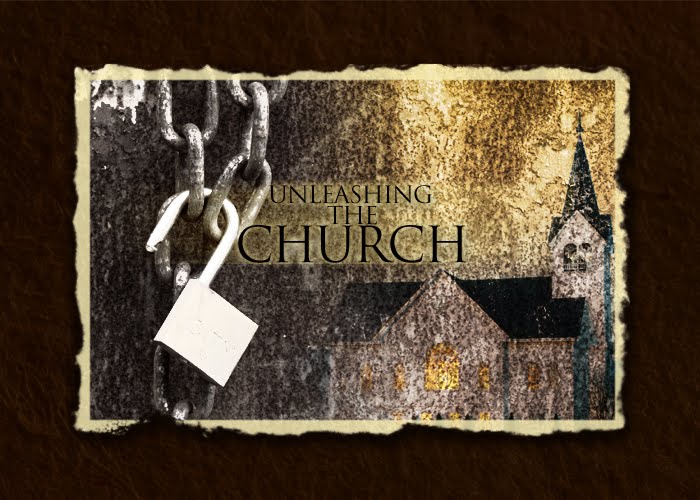By the early 1980s, some Community churches took the next logical step and became Seeker churches. Seeker churches make Life vs. Death the center piece of their ministry strategy. They have moved another step away from the Right vs. Wrong crowd. They prefer to attract people that don’t have any Christian beliefs. And when they educate new believers about the Christian life; they often teach them that there are not a lot of theological or behavioral issues worth dying over.
Clergy Control a Legacy of the Liberal/Fundamentalist Controversies
Today the Community Church mentality reigns supreme. Gone are the days when churches routinely split hairs over their over their pet doctrines. Also gone are the days when watching a movie is considered a sin. In fact pastors in conservative churches often draw illustrations from select movies.
But that doesn’t mean that clergy control in churches has lessened. A man who has been a faithful Christian and church man most of his life, and now attends a Seeker church, recently told Frank, “Sunday morning is the most controlled portion of my week. I drive into the church parking lot and attendants tell me where to park. I go into the church building and ushers tell me where to sit. During the worship service I am told when to sit, when to stand, when to sing or greet someone and when to keep quiet. Then I am told when to leave and again directed by the parking lot attendants as I leave. I think I have had it with church.”
Clergy Control a Roman Catholic Hangover
Today many church leaders may not be fighting over their doctrinal distinctives or petty behavioral issues; but their churches remain bastions of clergy control. Clergy control may have been enhanced during the Liberal/Fundamentalist Controversies, but its roots go much further back. In fact they go all the way back to our Roman Catholic heritage. We may claim to be Protestants but in reality, we have never fully embraced the Protestant doctrine of the Priesthood of Believers.
If we are to restore ministry passion to our churches, it must be structured so that it is possible for lay people to shape some portion of a church’s life. We believe that pastors and staff really are better equipped to shape and direct worship and edification. But mission is a different story; the rank and file are better equipped to shape the local mission strategy of churches. Which people groups a church ministers to should be determined mostly by the ministry passions of its lay people. In other words the SHAPE of a church’s local mission strategy should flow primarily out of the ministry passions of its lay people.
During the Liberal/Fundamentalist Controversies clergy focused on their theological distinctives and behaviors more than they did life and death. By the 1960s churches began to restore the New Testament priority on life and death over right and wrong; as was evidenced by the rapid rise of the Community Church Movement. While a Community Church can be a non-denominational church, it is just as likely to be a denominational church that initially prefers not to be identified with its denomination. Community and Seeker churches put an emphasis on life and death and keep their doctrinal distinctives to a minimum. Interestingly, that is the same approach that Parachurch organizations have always taken.
Long before the rise of the Community Church movement many Christians felt the need to minimize their denominational differences and get on with the task of fulfilling the Great Commission. They continued to attend churches, but their ministries and their passions were devoted to and channeled through the Parachurch organizations, which brings us to 1939 and the birth of America’s Parachurch Movement.
Followers
Subscribe to:
Post Comments (Atom)
About Me

- Rich
- I am a slave to no man or institution. I have worked with Frank Tillapaugh for thirty years and most of the ideas are work we would like to share.
The next generation

God thank you for two amazing young leaders
Looking Forward

Each year I get to spend time with young leaders and the gap is growing between them and my generation, why?
Popular Posts
-
I have watched new pastors burn out in less than a year...why? Fuller Institute did a survey and found that 80% of pastors believe that past...
-
General Calling and Special Calling Soon after the Roman emperor, Constantine, converted to Christianity in 315 A.D. churches began to profe...
-
I saw one of my friends (Wes, he is a follower of this blog, God bless him) tonight and he told me after reading this blog he was surprised ...
-
When 20% of the people do 80% of the work in a church, the church leaders usually think that they have an 80% problem. ...
-
I am taking a break from my series to talk about something that just happen. I just met Gavin, he arrived today. His parents Dan and Steph C...
-
If we ask, “what would Jesus do in His new body, i.e. the church; that would be a continuation of what he did in his original body?” The ans...
-
And, believe it or not, a strong emphasis on edification does not often generate mission. Mission potential isn't dependent on how well...
-
Several years ago my friend Frank took a walking tour in London that ended up at Wesley’s chapel. As the tour group ap...
-
Nothing influences the environment of a church as much as the preaching. It is through preaching that people understand how their pastor vie...
-
Ok yesterday I had one response to my blog and while it was thoughtful I was reminded that words on a screen do not always convey the experi...

No comments:
Post a Comment